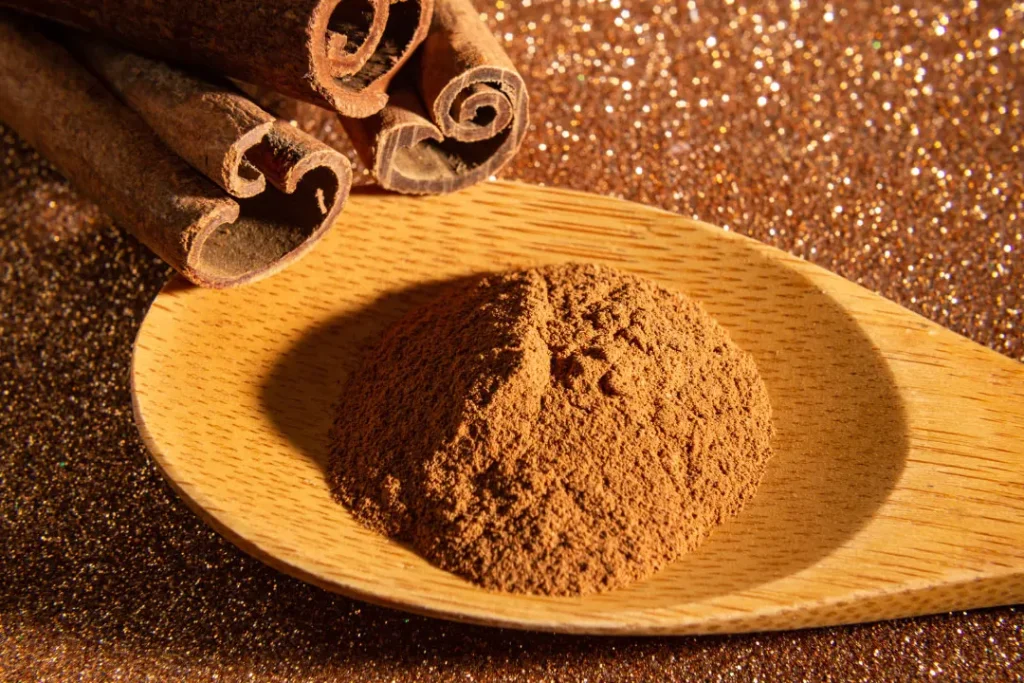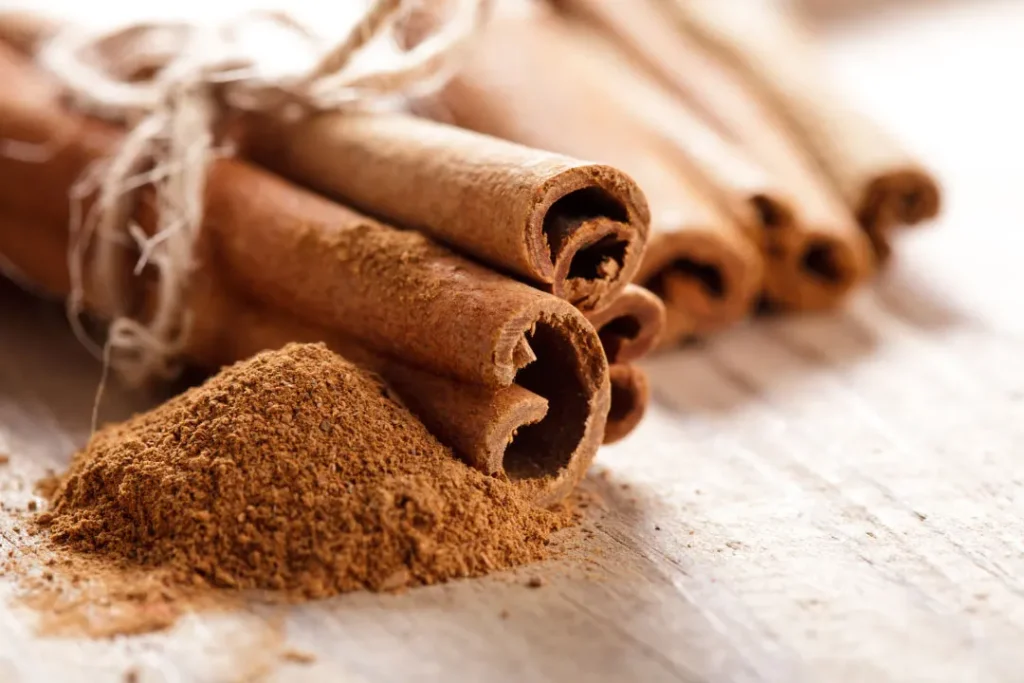Cinnamon bark (CB), a popular spice with a long history of medicinal use, is made from the inner bark of several species of cinnamomum trees. Although its warm, sweet aroma has made it a culinary mainstay, cinnamon bark’s numerous health advantages have drawn the attention of the scientific and wellness communities. This article gives a thorough overview of the characteristics, health advantages, recommended dosage, side effects, possible drug interactions, and the most responsible ways to use this aromatic nutritional supplement.
You May Also Like:
Canaigre: Benefits, Dosage, Side Effects, Drug Interactions, and Other Important Information
Cananga Oil: Benefits, Dosage, Side Effects, Drug Interactions, and Other Important Information
Nature of Cinnamon Bark
The tree species known as cinnamomum, cinnamomum verum (True Cinnamon), and cinnamomum cassia (cassia cinnamon), are the source of cinnamon bark. The bark is removed from the trees, dried, and then either ground into powder or rolled into sticks. CB has a complex chemistry that includes coumarin, eugenol, and cinnamaldehyde, each of which is responsible for its therapeutic effects.
The main chemical that gives cinnamon its distinctive flavor and aroma is cinnamonaldehyde. While coumarin is a naturally occurring substance with anticoagulant properties, eugenol is a natural antiseptic and analgesic. Each of these substances helps CB’s health benefits but can still have some interactions and side effects, necessitating further discussion.

Health Benefits
Antioxidants like polyphenols, phenolic acid, and flavonoids are abundant in CB. These substances neutralize unwanted toxins in our body, preventing oxidative stress, and lowering the risk of chronic illnesses like cancer and heart disease.
The active substances in CB have strong anti-inflammatory properties. These substances prevent your body’s inflammatory substances from being released, which reduces inflammation and relieves related conditions.
CB has been shown to significantly provide aid in treating diabetes. It acts similarly to insulin, improving cellular uptake of glucose and assisting in blood sugar regulation. This is because cinnamaldehyde and polyphenols improve insulin sensitivity.
According to research, CB can help with neurological disorders. It has substances that prevent the buildup of tau protein in our brain, a defining feature of Alzheimer’s disease. Its antioxidant and anti-inflammatory properties can also help with neuroprotection.

Chemistry of Cinnamon Bark
The powerful health benefits of cinnamon bark (CB) are due to the combination of bioactive compounds found in the bark. Cinnamaldehyde, eugenol, coumarin, and a variety of antioxidants like polyphenols, phenolic acid, and flavonoids are among these substances.
The primary ingredient that gives cinnamon its distinct flavor and aroma is cinnamonaldehyde, which makes up between 60-80% of the essential oil extracted from cinnamon bark. Eugenol is another substance that has antiseptic and analgesic properties. While coumarin does have some medicinal benefits, it has some health risks, particularly liver toxicity. The health advantages of CB are greatly influenced by its antioxidant content, which includes polyphenols, phenolic acid, and flavonoids.
Physiological Properties of Cinnamon Bark
Antioxidants
The antioxidants in CB are plentiful and essential in reducing oxidative stress, a major factor in the development of chronic diseases. These anti-oxidants stop the cell-damaging effects of the unwanted toxins and unstable molecules in your body. CB has the ability to prevent chronic illnesses like cancer and heart disease due to its antioxidant properties.
Properties that Reduce Inflammation
The bioactive compounds in CB are primarily responsible for its anti-inflammatory effects because they prevent the production of pro-inflammatory molecules. As a result, there is less inflammation, potentially offering relief from many inflammatory conditions.
Management of Diabetes
CB has proven to have significant potential in managing diabetes because of its impact on glucose metabolism and insulin sensitivity Cinnamaldehyde and polyphenols in CB enhance the uptake of glucose by our body’s cells, and they control blood sugar levels by acting like insulin.
Behavioral Health
The purpose of CB in maintaining neurological health appears to be complex. It contains substances that prevent the buildup of tau protein. Its anti-inflammatory and antioxidant properties can contribute to neuroprotection. This adds more potential benefits for a range of neurological conditions.

Optimal Dosage
The ideal CB dosage depends on the particular benefits you desire, as well as your age, general health, and if you have any chronic conditions. According to research, daily doses of 1 to 6 grams is recomended, but medical advice is required before you begin CB supplementation.
Side Effects
Despite the fact that CB is safe, excessive consumption can have negative effects like mouth sores, low blood sugar, and liver damage. Cassia cinnamon has high coumarin content. High doses should be also be avoided if you are pregnant or have liver disease.

Potential Substance Interactions
CB’s effect on blood sugar levels and potential liver toxicity make it possible for it to interact with drugs that treat diabetes, heart disease, and the liver.
Responsible Use of Cinnamon Bark
The secret to getting the most out of CB, as with all supplements, is responsible use. To determine your tolerance, always begin with a low dose and never go over the suggested dosage. Additionally, before beginning any new supplement, you should always speak to your doctor first before taking CB, especially if you are pregnant, suffering from a chronic illness, or taking medication.
Cinnamon Bark: Conclusion
Due to its potent anti-inflammatory properties, rich antioxidant profile, neurolgical health, and potential roles in managing diabetes, cinnamon bark has a promising position in the market for nutritional supplements. However, more research is still needed, so you should use caution when trying it. There is still a high possibility for having negative interactions and side effects. Cinnamon bark serves as a reminder of the profound healing potential of nature as we continue to research the advantages of plant-based supplements.
References:
- Cinnamon: A Multifaceted Medicinal Plant. Retrieved From: https://www.hindawi.com/journals/ecam/2014/642942/
- Cinnamon extract improves fasting blood glucose and glycosylated hemoglobin level in Chinese patients with type 2 diabetes. Retrieved From: https://nutritionj.biomedcentral.com/articles/10.1186/1475-2891-11-77
- Cinnamon: Potential Role in the Prevention of Insulin Resistance, Metabolic Syndrome, and Type 2 Diabetes. Retrieved From: https://www.ncbi.nlm.nih.gov/pmc/articles/PMC2901047/
Important Note: The information contained in this article is for general informational purposes only, and should not be construed as health or medical advice, nor is it intended to diagnose, prevent, treat, or cure any disease or health condition. Before embarking on any diet, fitness regimen, or program of nutritional supplementation, it is advisable to consult your healthcare professional in order to determine its safety and probable efficacy in terms of your individual state of health.
Regarding Nutritional Supplements Or Other Non-Prescription Health Products: If any nutritional supplements or other non-prescription health products are mentioned in the foregoing article, any claims or statements made about them have not been evaluated by the U.S. Food and Drug Administration, and such nutritional supplements or other health products are not intended to diagnose, treat, cure, or prevent any disease.


